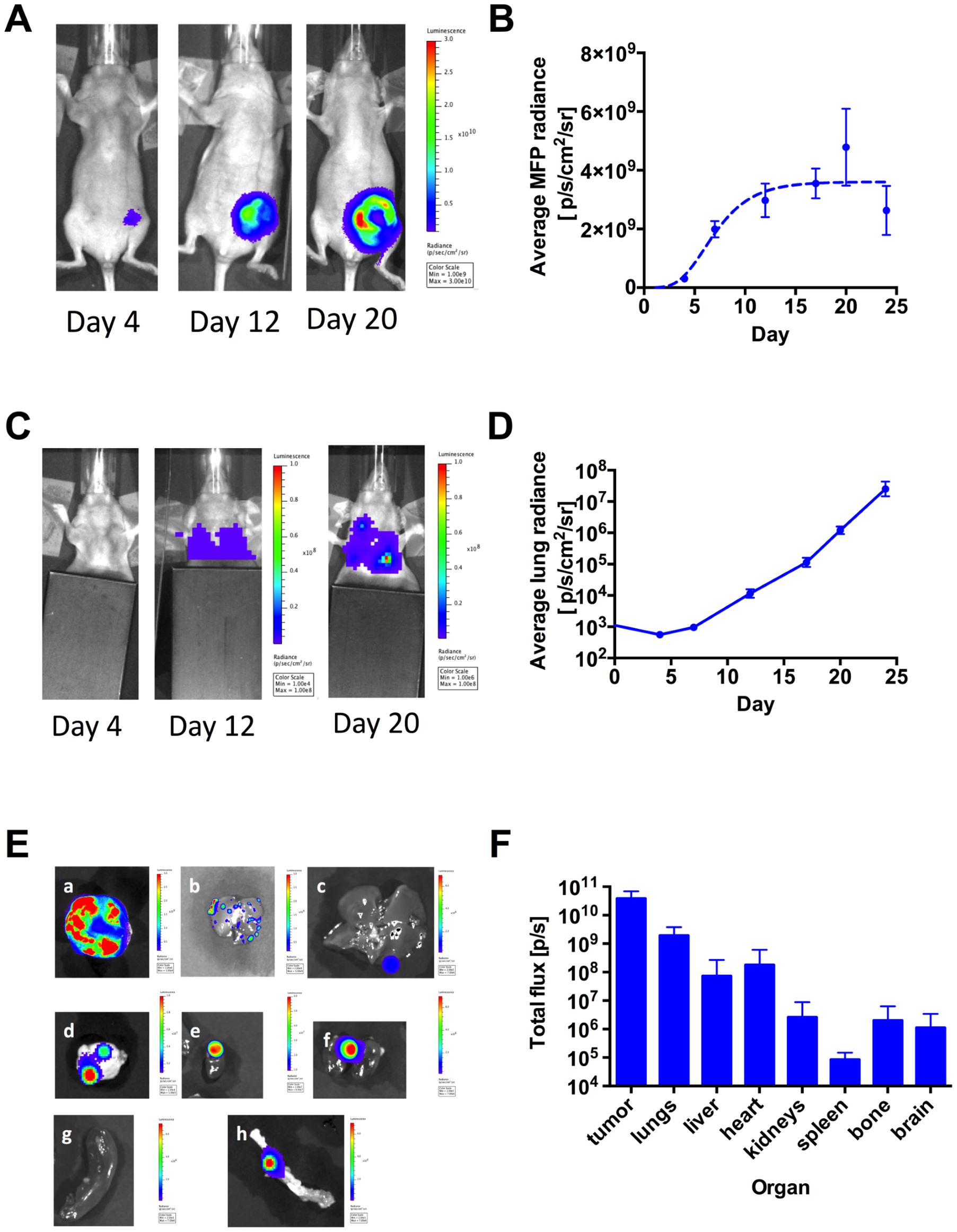- About Us
- One Stop Service
- Platform
In-Vitro
Molecular Assays
Cell-Based Functional Assays
In-Vivo
Pharmacology
Cancer PharmacologyInflammation Pharmacology - Join Us
- Contact Us
- Drug Discovery
- Molecular Assays
- Cell-Based Functional Assays
- Immune Functional Assays
- Tumor Pharmacology Platform
- Inflammation Pharmacology Platform
- In-Vitro ADME/DMPK
- In-Vitro Toxicology
- Pharmacology
- Cancer Pharmacology
- Inflammation Pharmacology
- In-Vivo ADME/DMPK
- In-Vivo Toxicology
- In-Vivo Pathology
- Clinical Laboratory
In-Vivo Tumor Imaging
Bioluminescence imaging detects and measures the bioluminescent signal in tissues using a non-invasive optical imaging system. It detects visible light from the oxidation of a substrate caused by an enzyme as a molecular reporter.
_t9tg.png)
Example
Bioluminescence imaging of primary tumor and metastases in the 4T1-GL orthotopic mammary tumor model
(A) Primary tumor growth in the mammary fat pad (m.f.p) as monitored using BLI, following implantation of 2×107 4T1-GL cells in the fourth left mammary fat pad (image scales in p/s/cm2/sr, n = 7 mice). (B) Corresponding quantification of BLI signal in the m.f.p area, shown as mean ± SEM and fit of the mean values to a Gompertzian tumor growth equation (dashed line, R2 = 0.86). (C) Metastases in the upper body (lung area) as monitored using BLI in the same animals (image scales in p/s/cm2/sr). (D) Corresponding quantification of the signal in the lung area, shown as mean ± SEM. (E) Metastases in excised organs on day 23
Reference
Sasportas LS, Hori SS, Pratx G, Gambhir SS. Detection and quantitation of circulating tumor cell dynamics by bioluminescence imaging in an orthotopic mammary carcinoma model. PLoS One. 2014;9(9):e105079. Published 2014 Sep 4. doi:10.1371/journal.pone.0105079

Shanghai Novopathway Biotechnology
Building No.5, East Huaxia Road No.333, Pudong New Area, Shanghai
BD Cooperation Email: BD@novopathway.com Tel: 021-5838 0618-501
Join Us Email: HR@novopathway.com Tel: 021-5838 0356

Beijing Sun-Novo Pharmaceutical Research
Building No.7, West Shuangying Road No.79 , Changping Area, Beijing
Website: http://www.sun-novo.com




